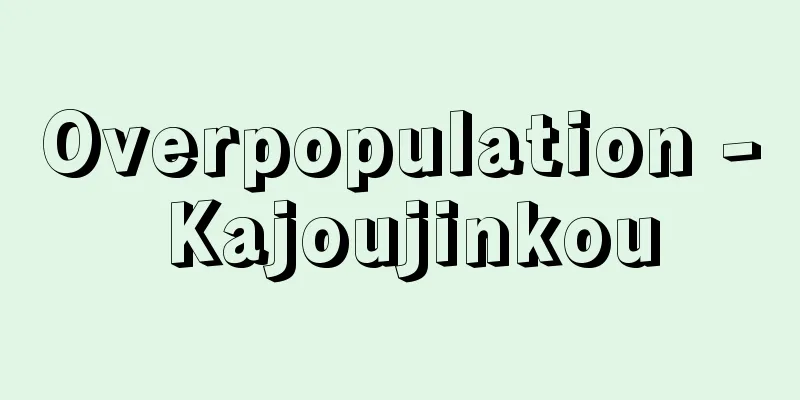"Kanke Koso" - Kanke Koso

|
...This is a collection of 46 poems written during the period of exile in Dazaifu. It is also called "The Sugaya Koso." It is a collection of poems written in prison, free from Chinese imitation, in which a Japanese poet expresses the despair of the Japanese people with blood-curdling resentment. All of the poems are masterpieces and masterpieces. *Some of the terminology explanations that refer to "Suga Family Later Graces" are listed below. Source | Heibonsha World Encyclopedia 2nd Edition | Information |
|
…大宰府流謫(るたく)時代の作品46編を集める。《菅家後草(こうそう)》とも呼ぶ。中国の模倣を脱し,日本の詩人が日本人の絶望体験を,血を吐くような怨念で表現した牢獄からの遺言詩集で,そのすべてが珠玉,絶唱である。… ※「《菅家後草》」について言及している用語解説の一部を掲載しています。 出典|株式会社平凡社世界大百科事典 第2版について | 情報 |
>>: Interstitial animals - Interstitial animals
Recommend
Gerschenkron, A. (English spelling) GerschenkronA
…On the other hand, there are those who see indus...
Emulsion - Emarujyon (English spelling) emulsion
In colloidal dispersion systems, this refers to a...
Liquid granulation - Liquid granulation
...Tablets and firebricks found in medicines are ...
Li Ding-guo; Li Ting-kuo
[raw]? [Died] Kangxi 1 (1662) A military commander...
Astringent - astringent
A drug that combines with nitrogen-containing comp...
Vladimir Highway - Vladimir Highway
…Vladimir then existed merely as a provincial cit...
Fatuus
…He was early identified with the Greek faun Pan,...
Qarluq
...This Turkic stone inscription is the oldest kn...
Functional dead space
...However, the parts of the respiratory system t...
Atarigane - Atarigane
A type of idiophone used in festival music, kabuki...
Minnelli, V. (English spelling)
...During wartime, musical films became a kind of...
Silk reeling
This is the process of finding the main threads of...
Thick-toothed clogs - Atsubageta
...Snow geta, which are used for walking on light...
Skoda, Joseph
Born: December 10, 1805 in Bohemia [Died] June 13,...
Chemical prevention - KAGAKUYOBO
…However, chemotherapy is now being attempted for...





![Wazuka [town] - Wazuka](/upload/images/67cd42c6e85ab.webp)



